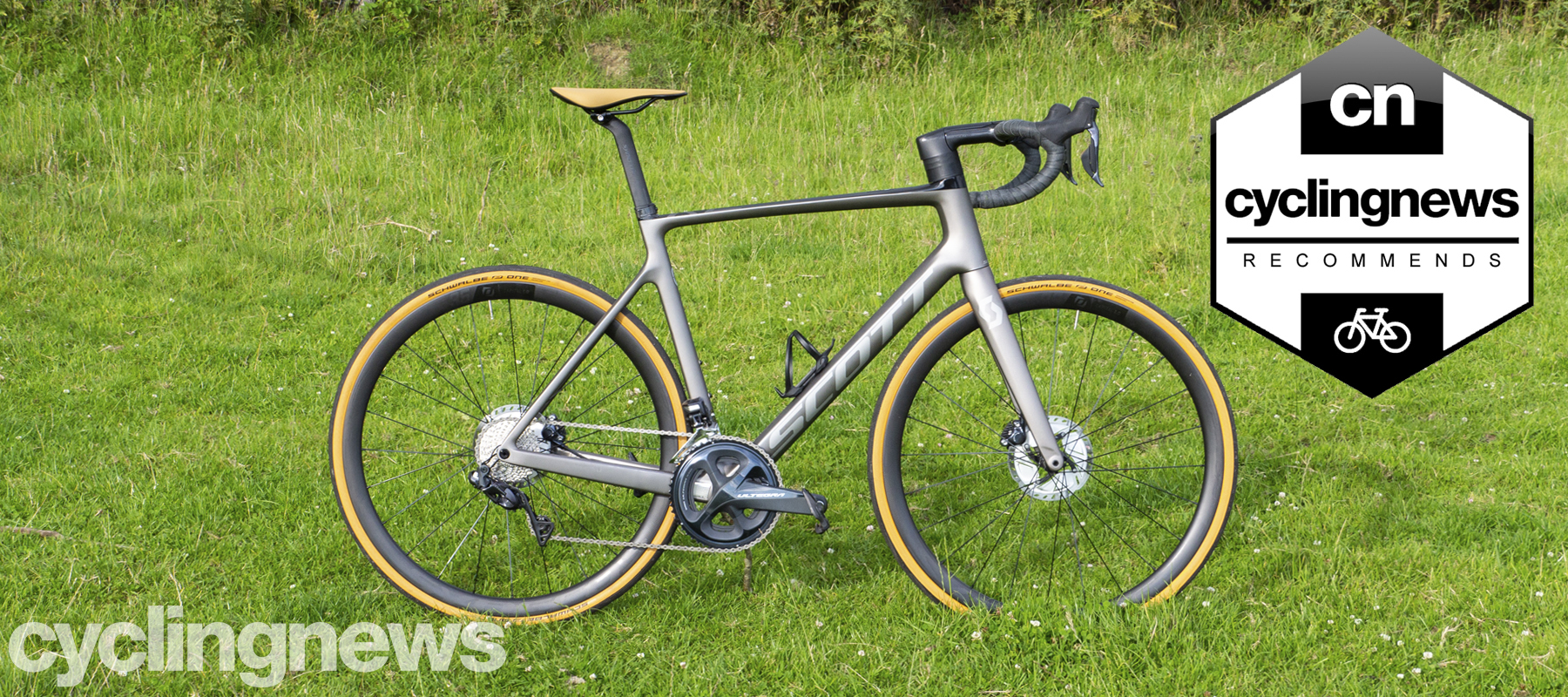Cyclingnews Verdict
A safe, but solid all-rounder that inspires confidence in the corners
Pros
- +
Confidence-inspiring ride
- +
On-trend tan-walled tyres and matching saddle
- +
Tubeless ready wheels
- +
Ultegra Di2 is faultless as ever
Cons
- -
Flimsy derailleur hanger
- -
Only missing a power meter
You can trust Cyclingnews
Despite its bikes being ridden at the top of the sport by Mitchelton-Scott in both the men's and women's WorldTour, Scott as a brand is still somewhat of an underdog when it comes to the road-bike market. That doesn't mean that the Addict RC should be overlooked, though, and judging by our experience during this test period, the Addict RC has what it takes to mix it with the best road bikes.
Jumping on the recent trend of weaving in aerodynamic efficiencies into a lightweight platform, the Addict RC is a racing all-rounder. As a sponsor to Mitchelton-Scott, it is the bike of choice for the both the men's and women's teams – sprinters and climbers alike – and has been ridden to both stage-race and one-day success by Adam Yates and Annemiek Van Vleuten, respectively.
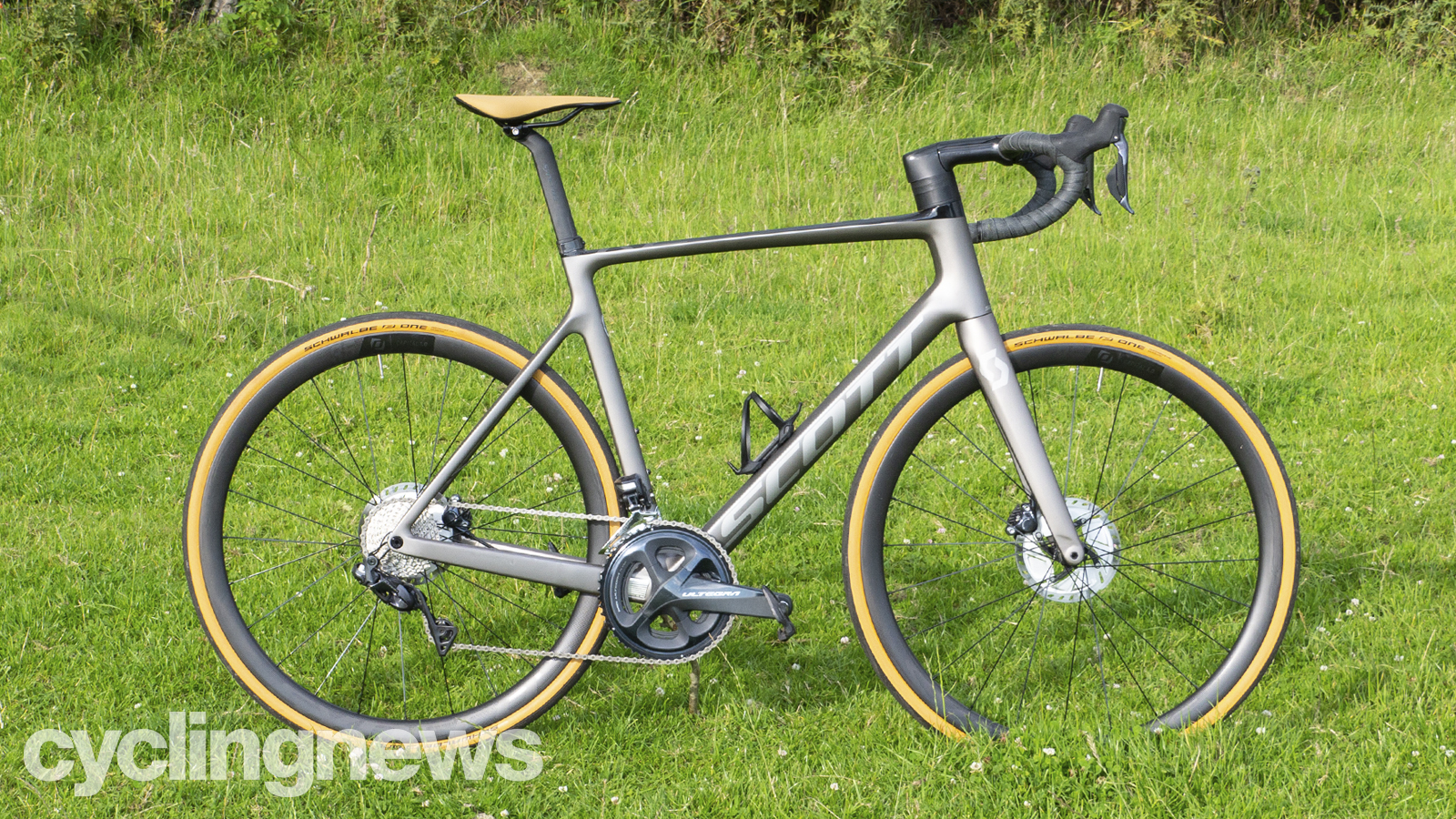
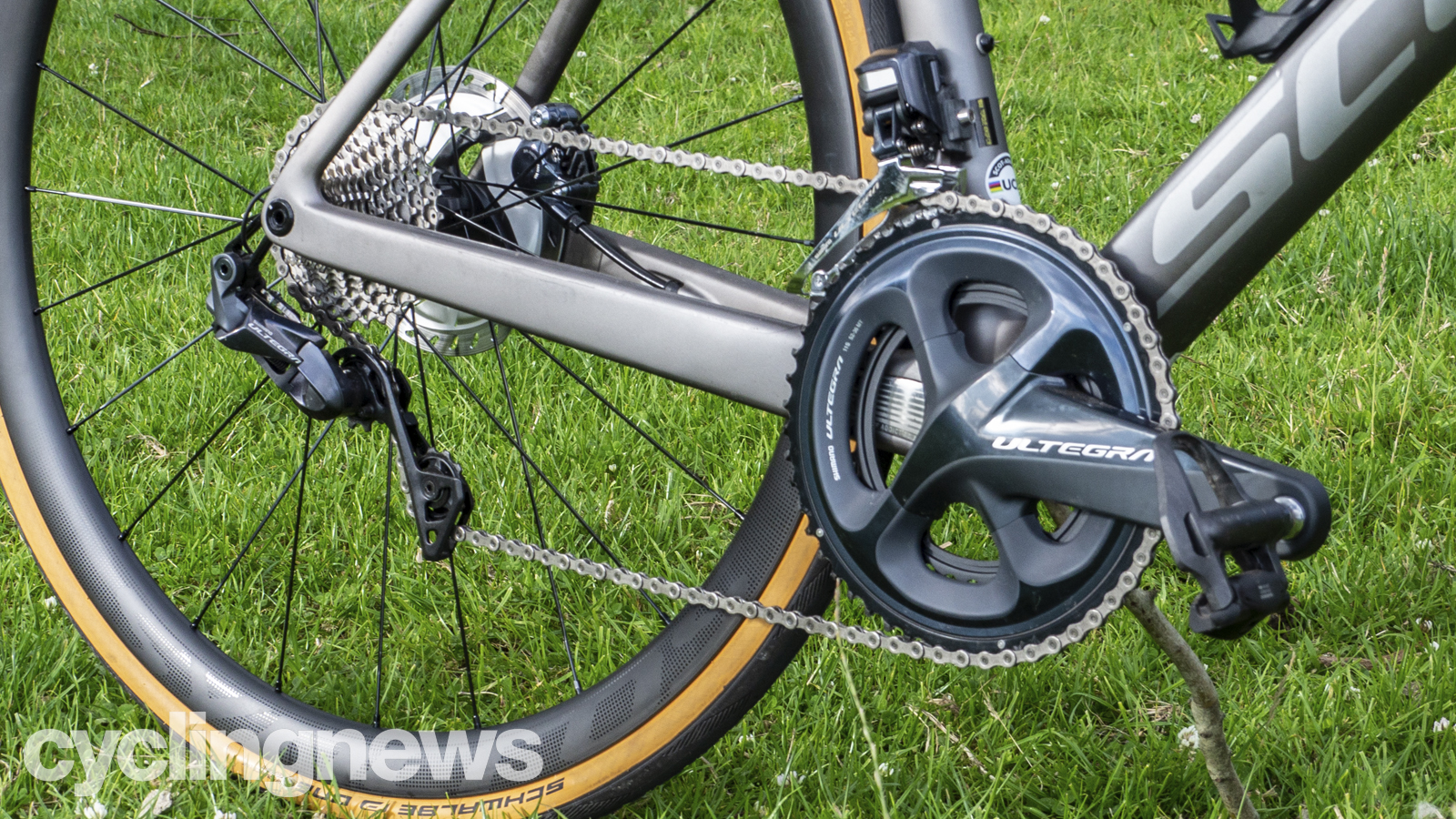
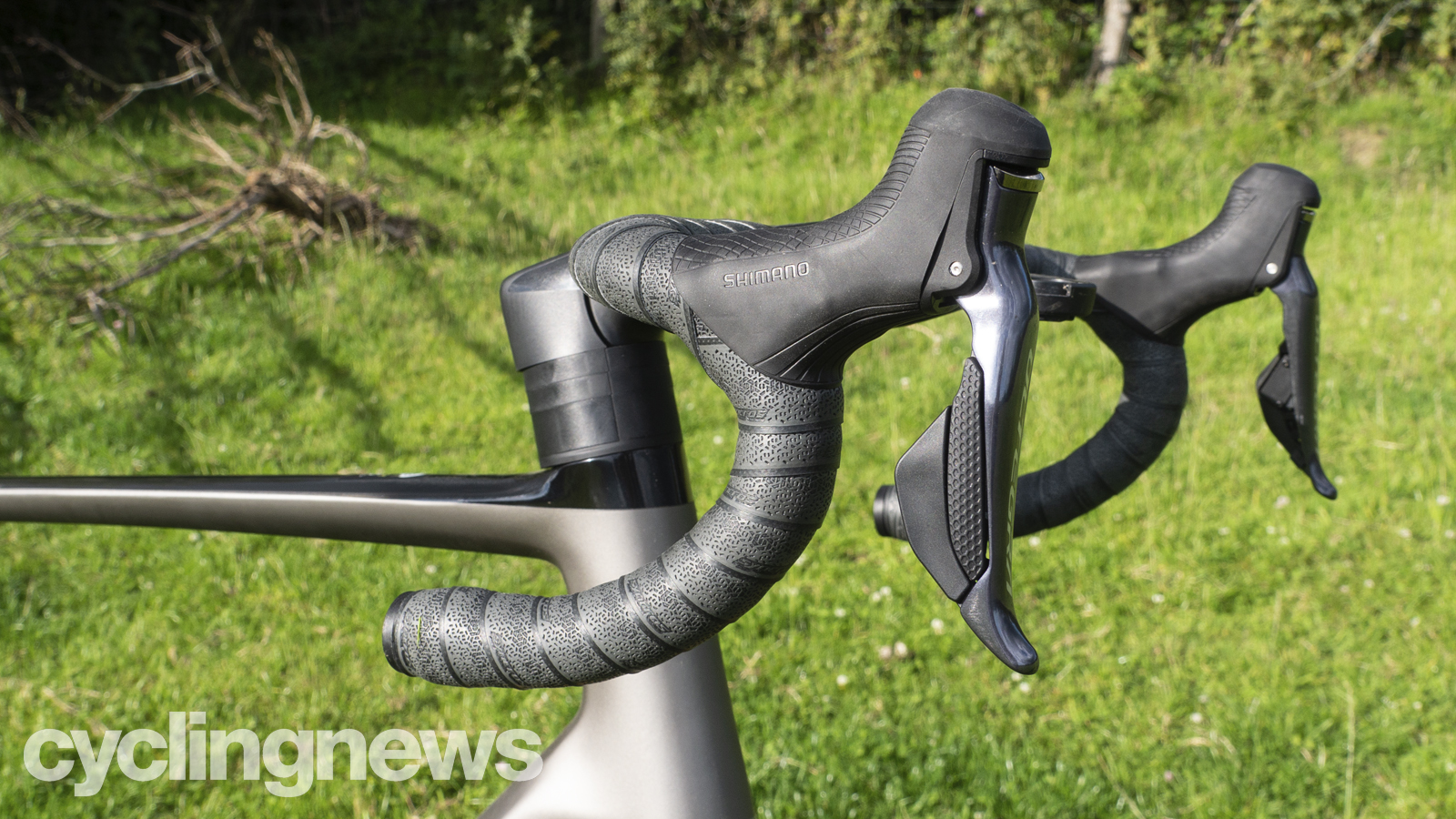
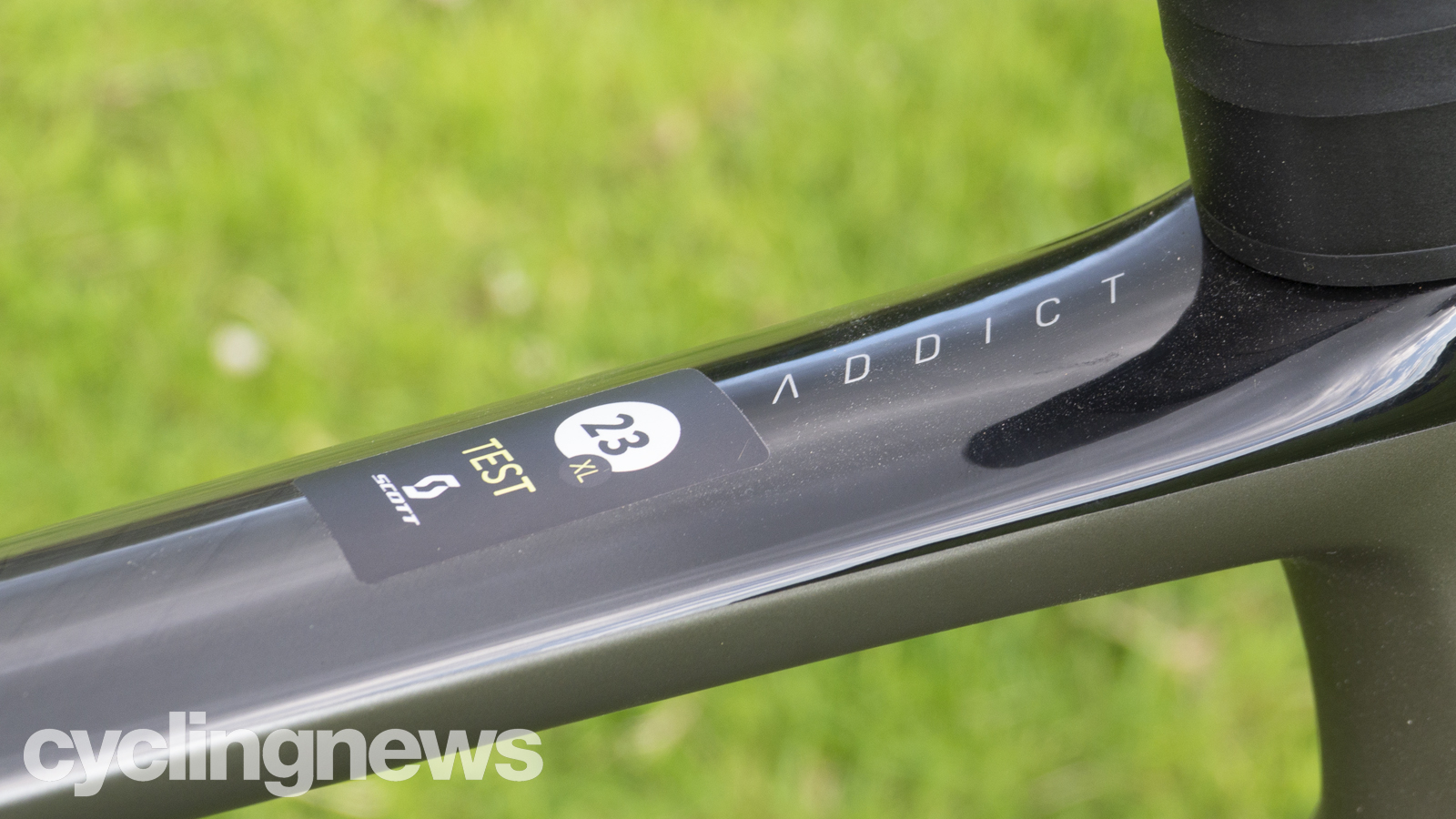
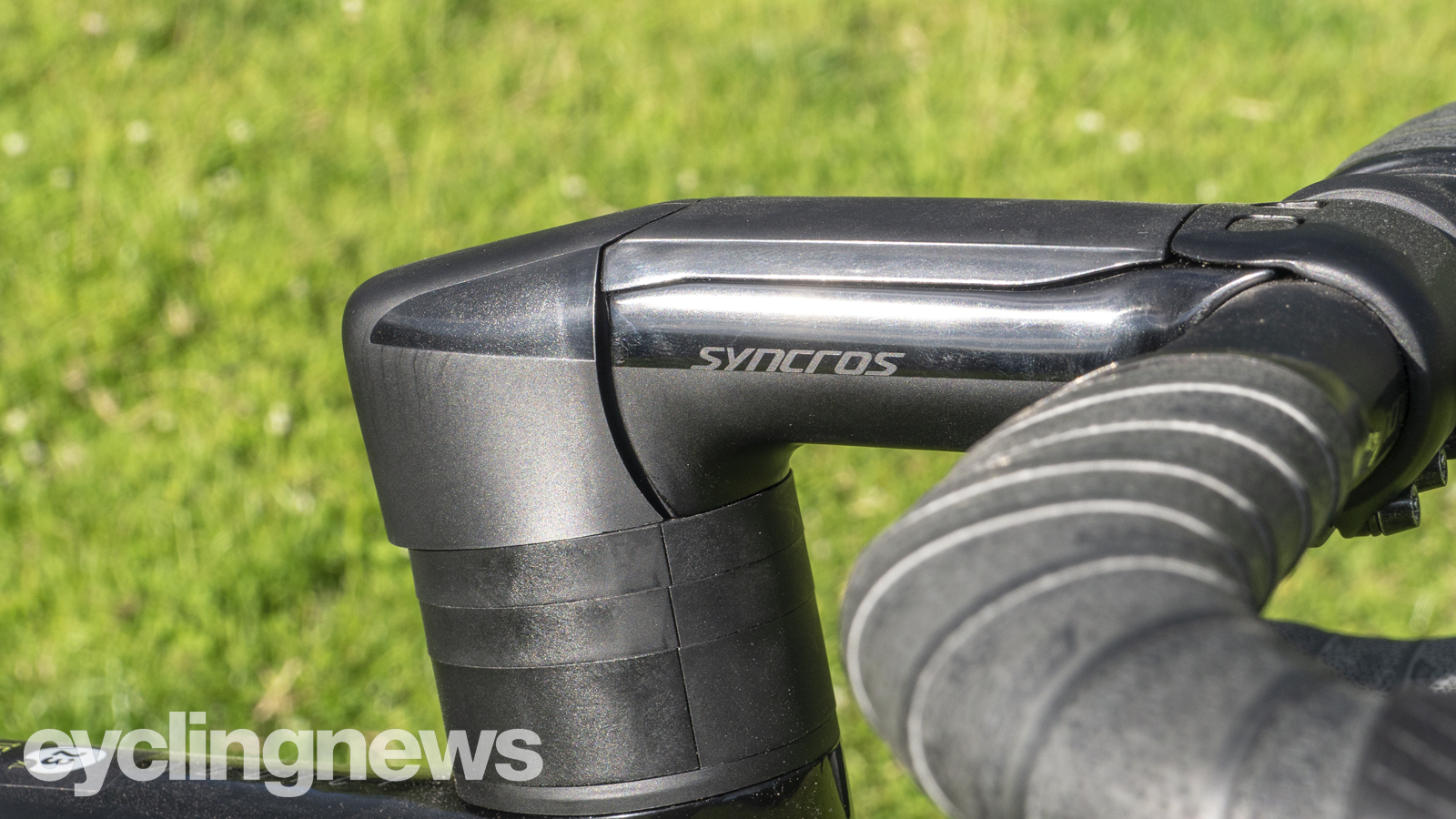
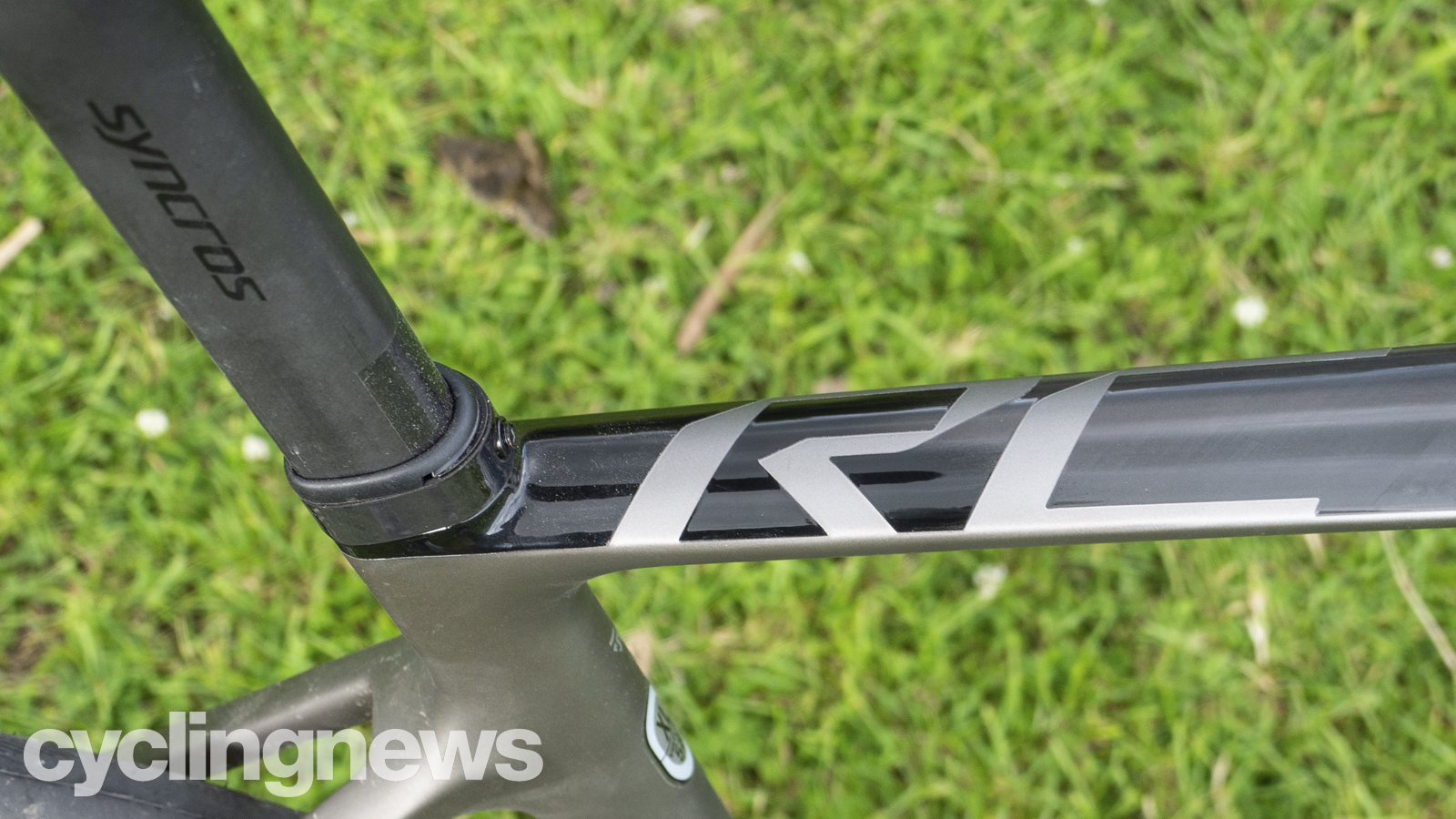
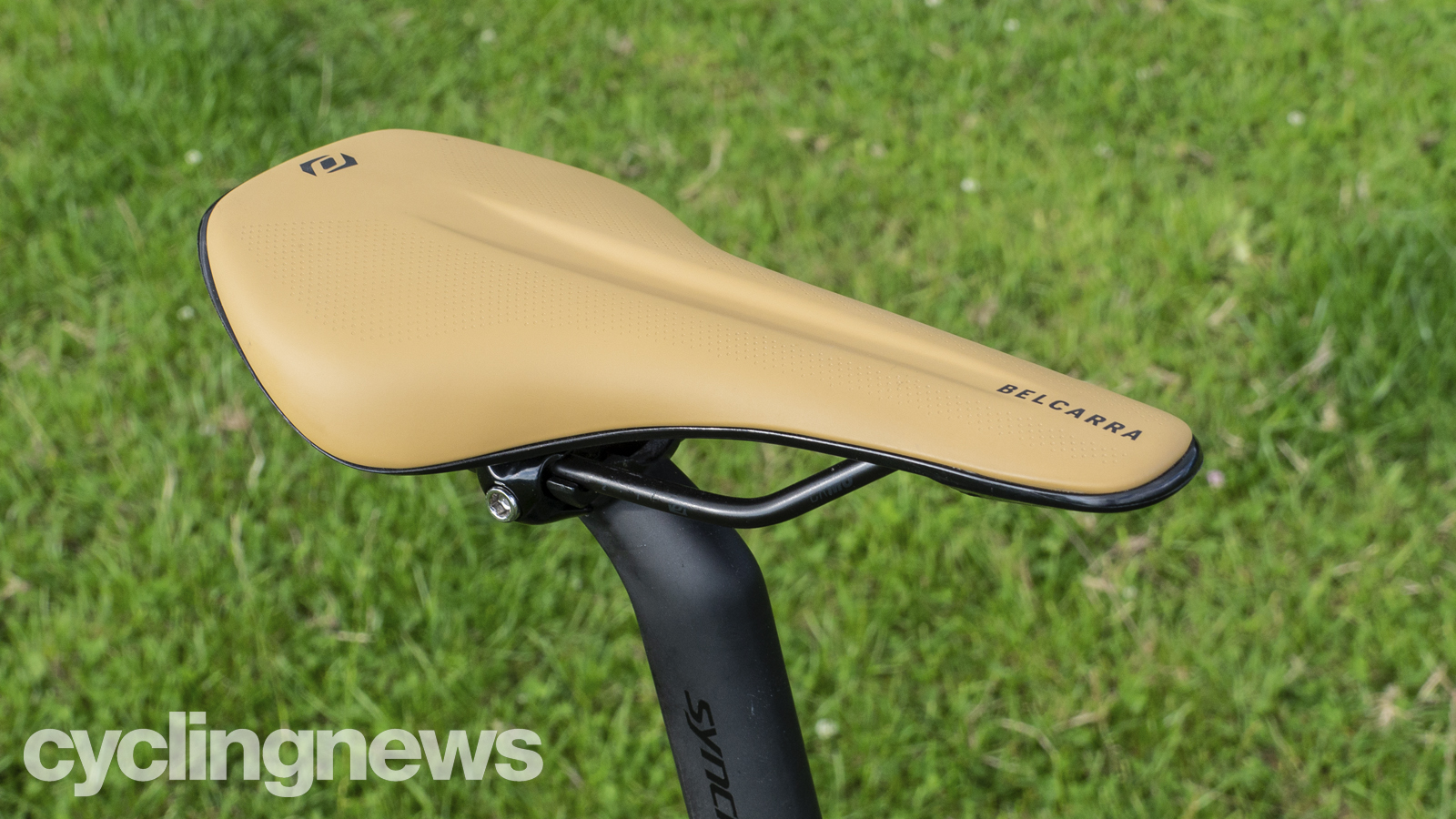
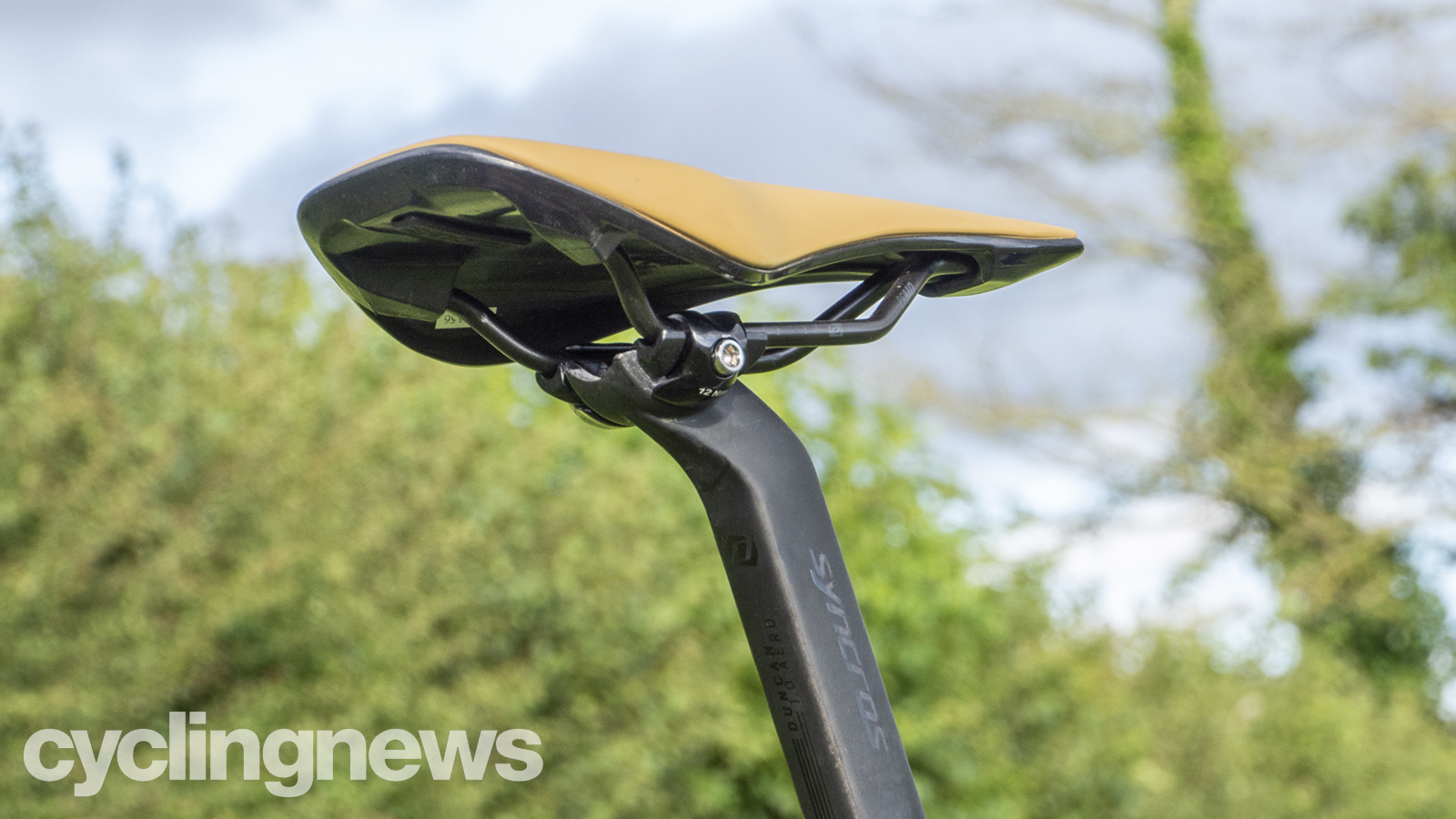
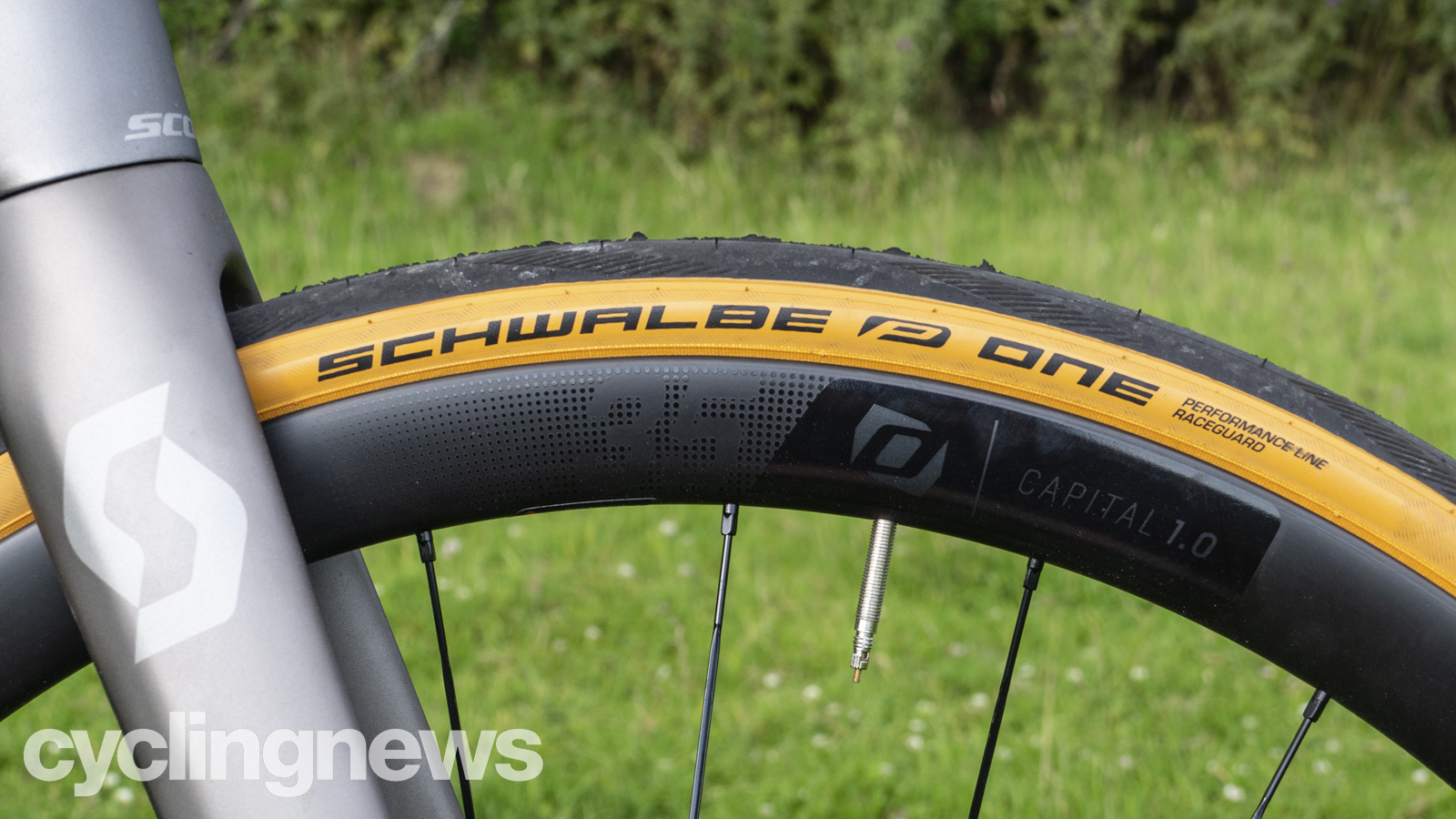
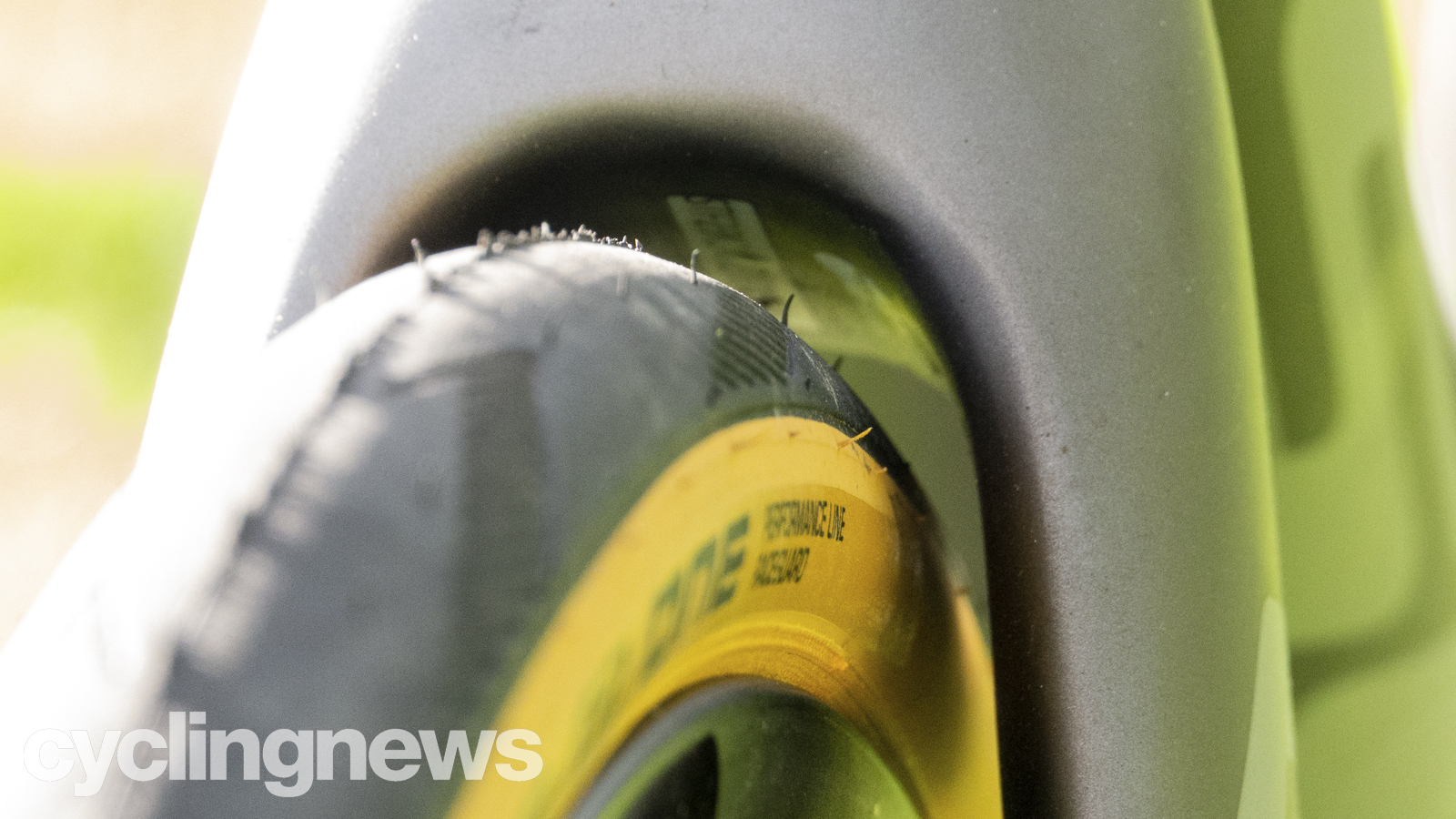
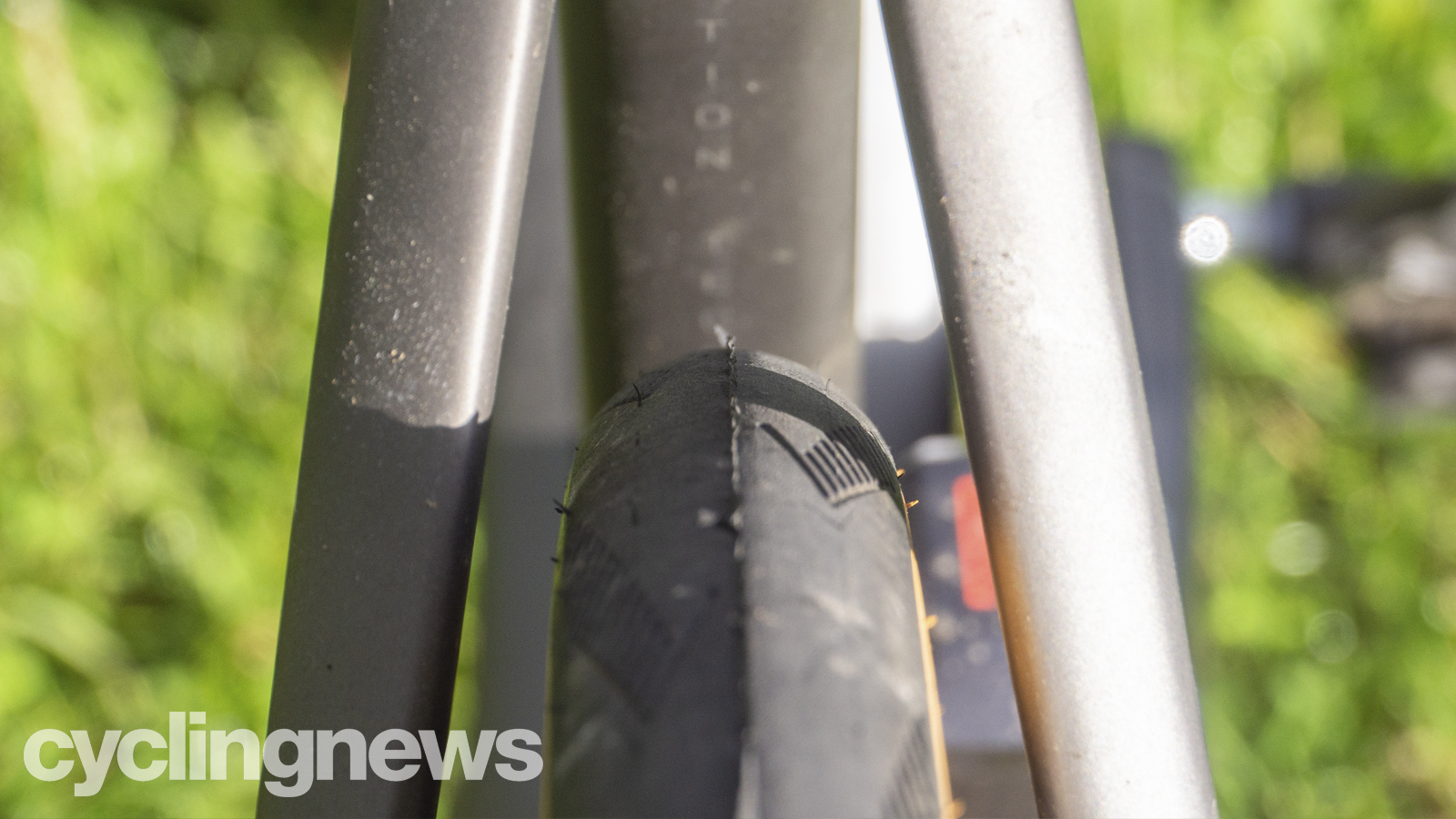
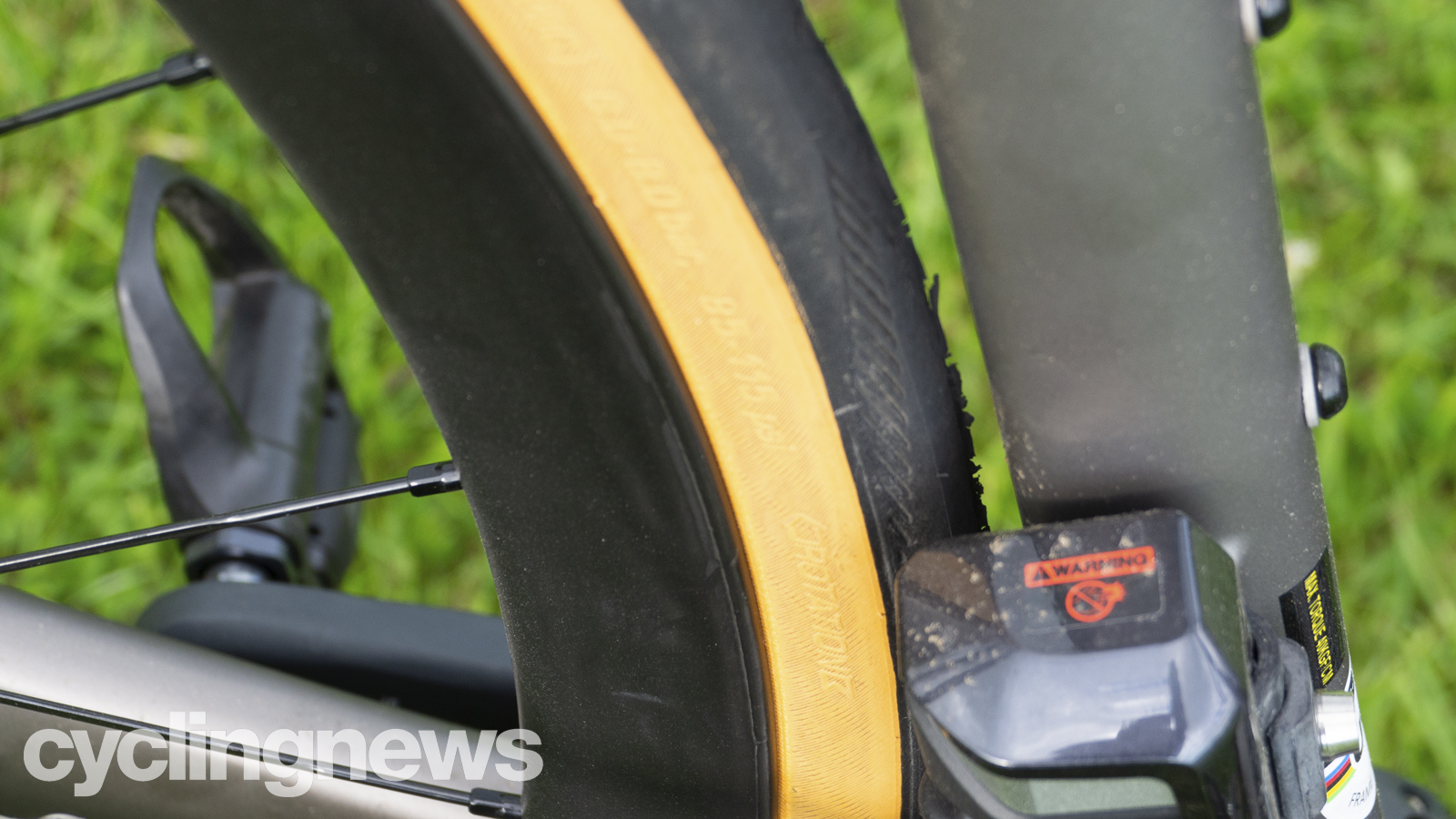
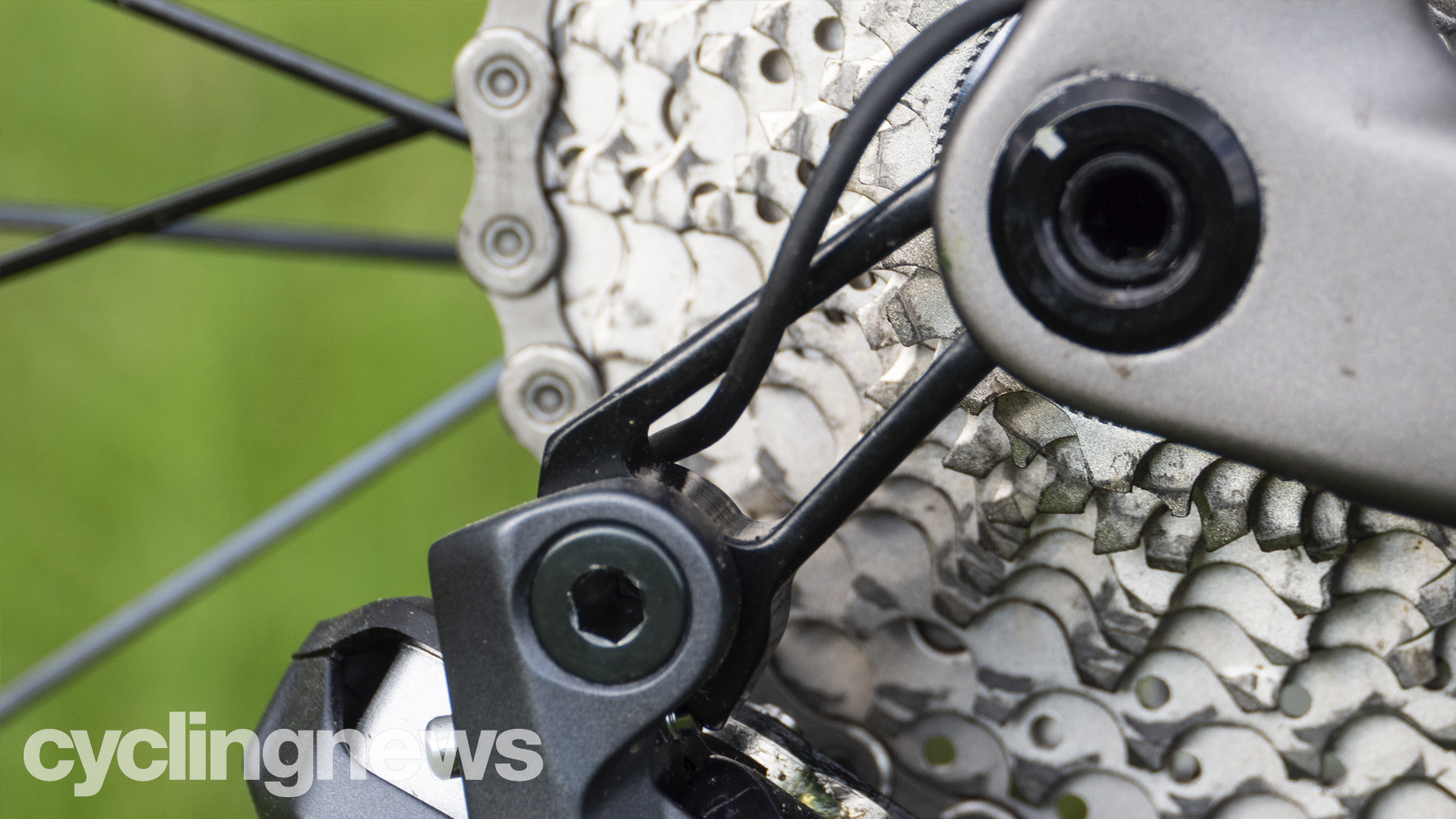
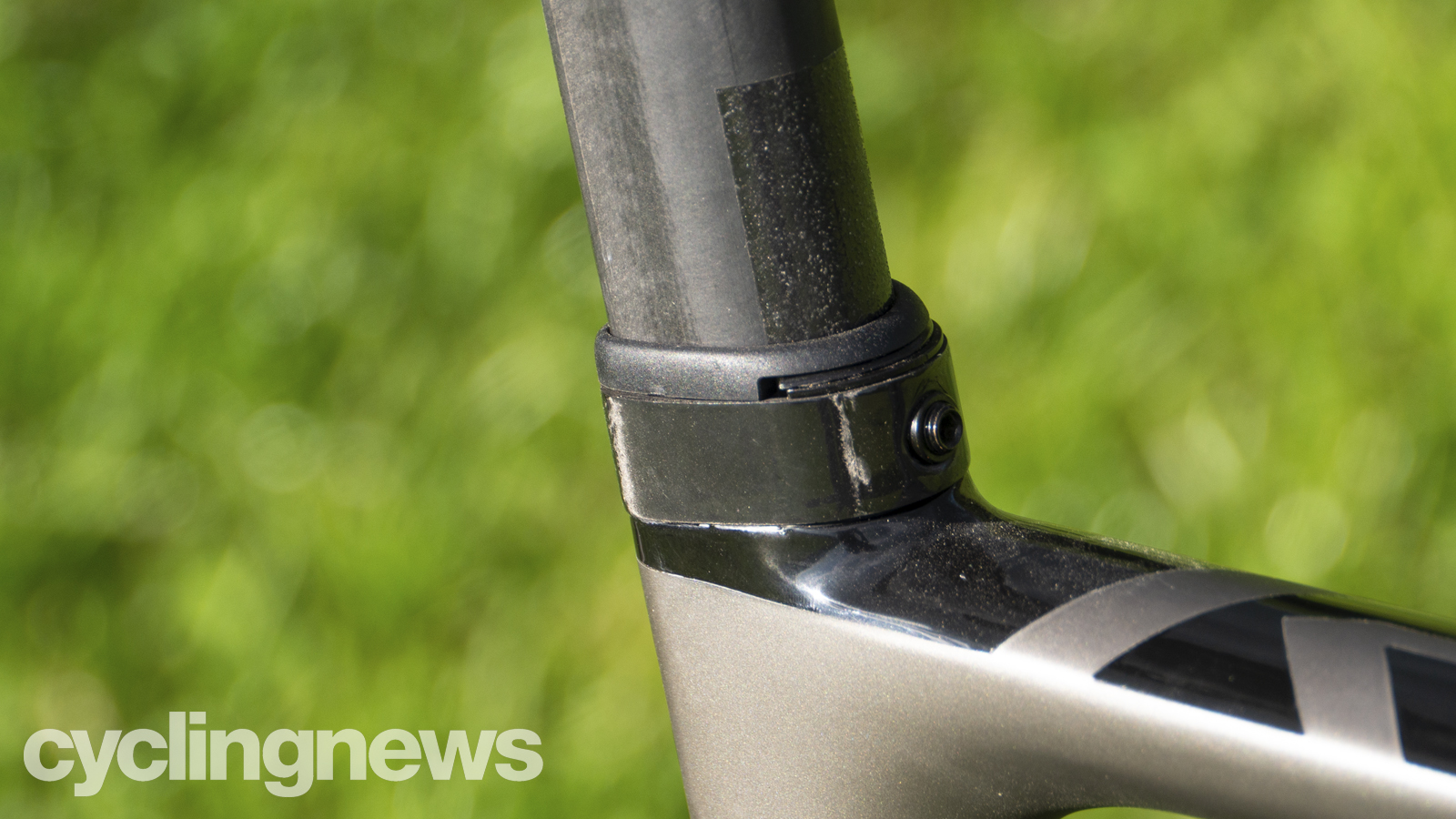
Design and aesthetic
Aesthetically, the Addict RC 15 follows the modern lightweight-with-a-hint-of-aero trend. Affecting both form and function, the frame features dropped seat stays, which are said to improve aerodynamics and increase vertical compliance, as well as a D-shaped seatpost and truncated tubing throughout.
There are also a few areas of integration that Scott has designed that stand the Addict RC apart from its competition. One such area is the integrated brake mount cover, which is magnetised and is used to hide the otherwise ugly brake mounting bolts.
In addition, the cockpit is devoid of any free-flowing cables or hoses thanks to its complete integration. This not only results in an extremely clean visual, but it will further affect the aerodynamics of the bike.

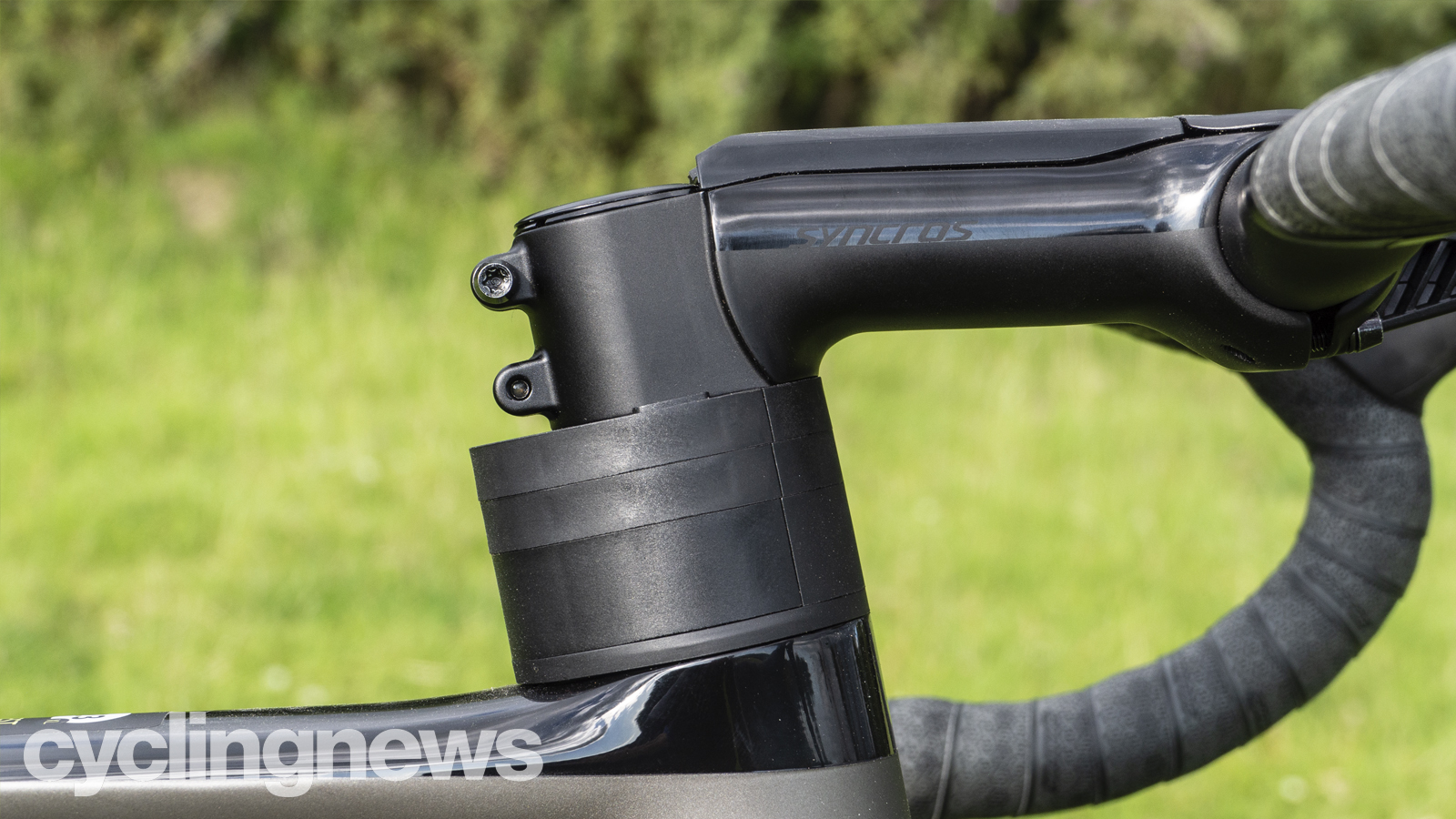
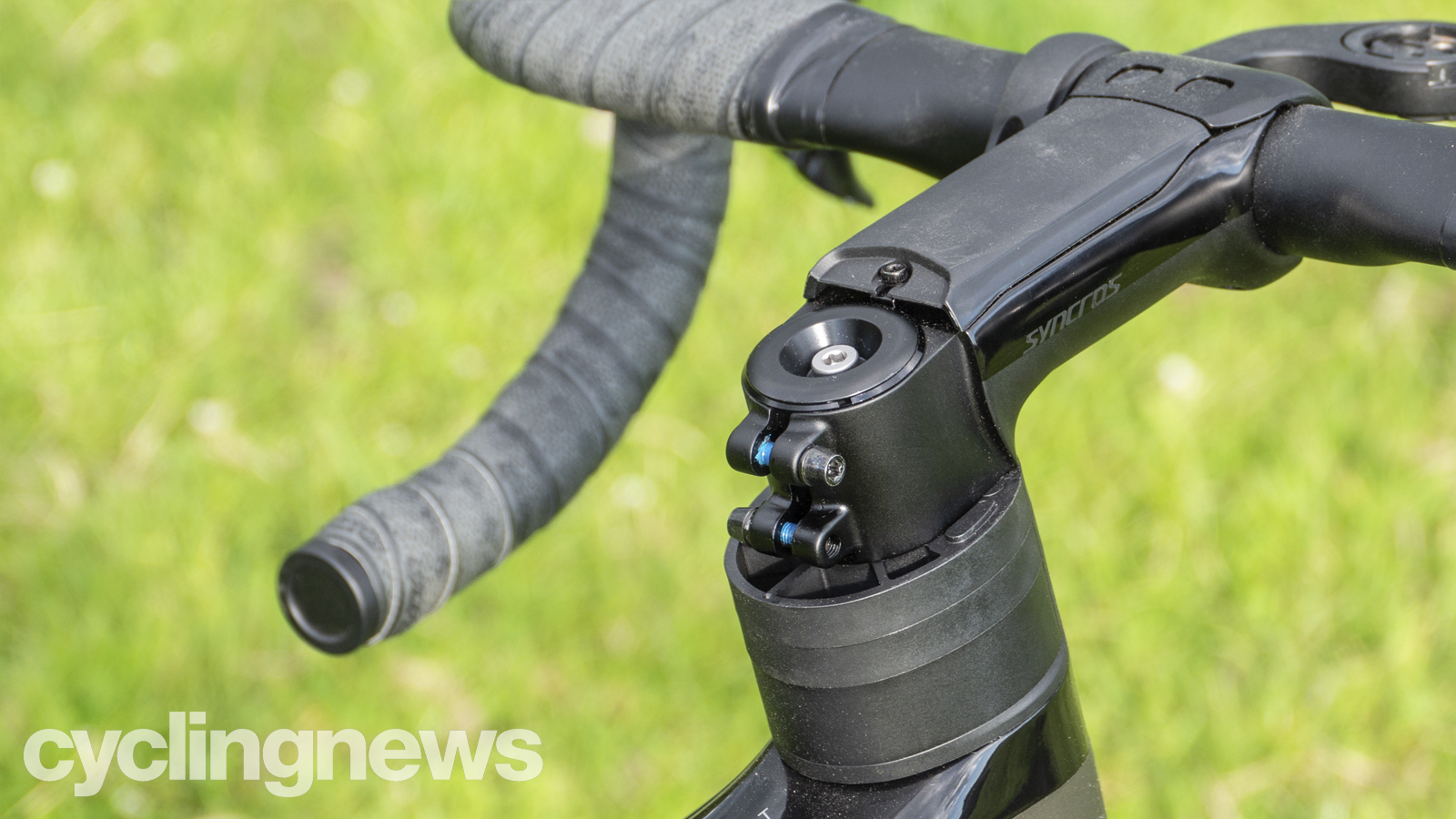
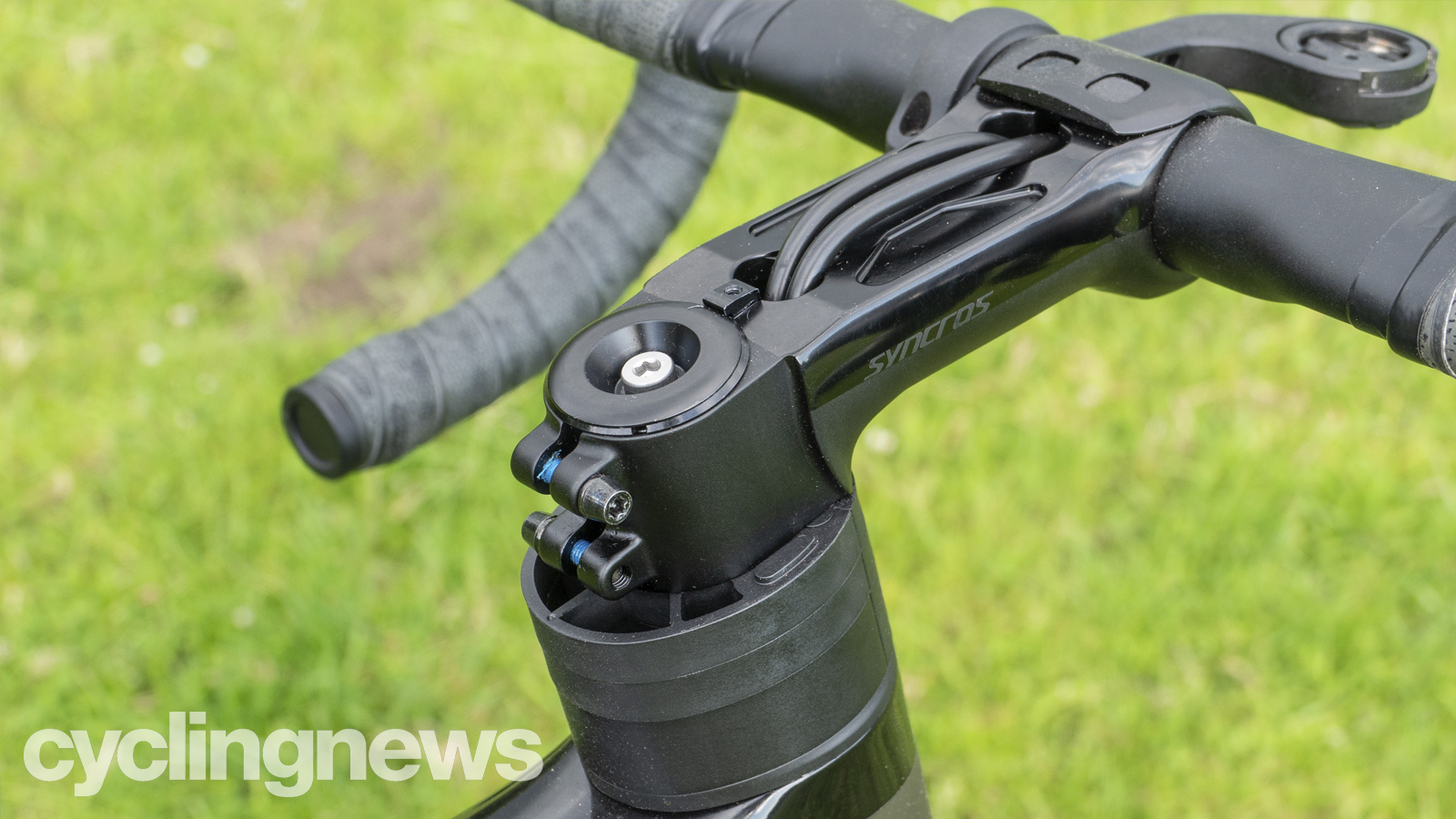
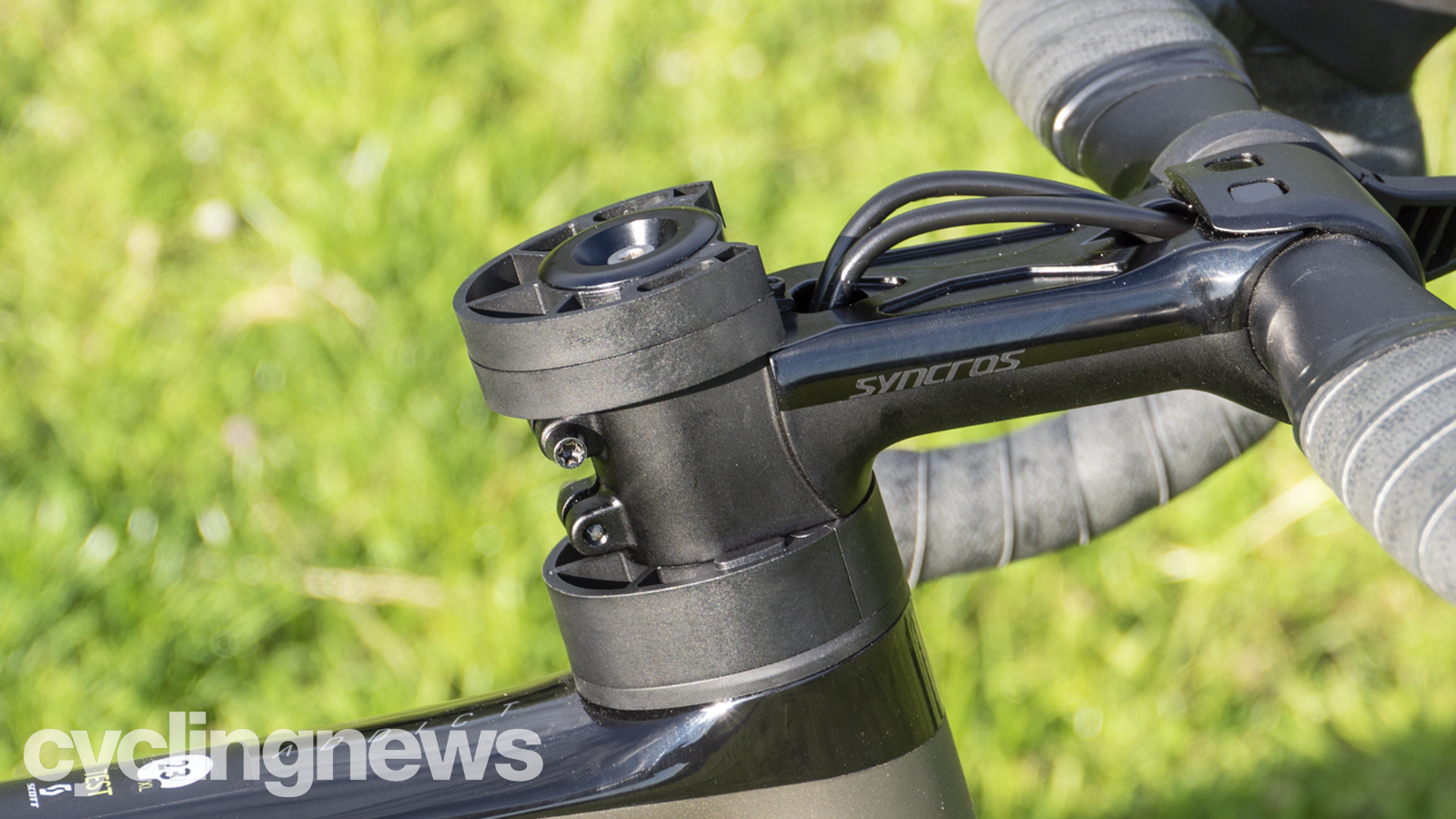
The cables run through the inside of the handlebars, through the stem, then through gaps inside the proprietary headset spacers and into the headtube of the frame. From a design point of view, Scott's version of this system has its pros and cons. The spacers themselves are splittable, which is great for home mechanics, as it means a spacer can be removed without having to re-cable the entire front end. However, those wanting to test out a lower position will have to do so without the vanity covers for the headset and stem, because the headset spacers are too large (see image five above for reference).
The other negative here is that even with the steerer cut to the correct length, the vanity cap that is used to hide the headset top cap seems to fit badly and spoils the clean and tidy aesthetic somewhat.
From a colourway point of view, the Addict RC 15's frameset is relatively safe. However, the bike is specced with tan-walled tyres and a matching Syncros Belcarra saddle, which adds a bit of personality to the design of the bike.
The frameset is made from Scott's tier-two HMX carbon fibre and, all told, the bike is claimed to weigh 7.55kg (although Scott fails to mention which size). Our 58cm test bike weighed in at 7.81kg without pedals or bottle cages, which won't trouble the best lightweight bikes any time soon, but for an Ultegra-equipped bike with a smattering of aluminium, it's certainly competitive. Is one kilogram worth the £5,799 difference between this and the £10,799 Addict RC Ultimate? I'm unconvinced it is.
Tyre clearance is rated at 28mm, and luckily for comfort-seekers, that's exactly what's specced on all Addict RC model out of the factory. While 25c has become de rigueur in road cycling circles, there is literature to suggest 28c can offer equally fast rolling resistance results whilst also offering increased comfort. Even without proof of rolling resistance, it's still refreshing to see a wider, more comfortable and more confidence-inspiring tyre specced.
Many of the adjustments on the Addict RC – like all of Scott's range – use Torx bolts as opposed to the more-common hex keys. This can be a cause for minor frustration when out in the field, as not all multi-tools are equipped with Torx keys. It's also easier to thread the heads of a Torx bolt than it is a hex bolt.
As a dedicated race bike, it's perhaps unsurprising to see aggressive stack and reach numbers, but compared to the competition, it's a happy average.
Specifications
The Addict RC is available in a variety of specs, which range from the reasonably budget-friendly Addict RC 30 at £3,199 to the frankly outrageous Addict RC Ultimate at £10,799 Our model is certainly towards the lower end of that range, although at £4,999, it's still not your typical definition of loose change. Thankfully, for your money, you get a fairly heavy sprinkling of tech, including Shimano's Ultegra Di2 road bike groupset, tubeless-ready carbon road wheels and a carbon fibre seatpost.
The Ultegra chainset misses out on an integrated power meter, which would have been a nice inclusion, but, that aside, there's nothing on the Addict RC 15 that I would say is a prime candidate for immediate replacement.
The Ultegra chainset is fitted with a relatively neutral semi-compact 52/36 chainring combination, which spins freely in the press-fit bottom bracket and, throughout our testing period, was creak-free. At the back, Scott has equipped the bike with an 11-30T cassette, which will ease steep climbs somewhat for those more used to a compact chainset.
The bike is fitted with a Syncros Capital 1.0 35 Disc wheelset, which is tubeless-ready, but set up tube-type from the factory with Schwalbe's impressive Performance Line One RaceGuard road tyres. The Addict RC 15, like all of the Addict RC range, is committed to disc brakes, and here you'll find Shimano's 160mm SM-RT800 rotors front and rear.
The factory-fitted cockpit dimensions – which in my 58cm frame size is usually frustratingly short and wide – are refreshingly in-keeping with what I believe a cyclist is actually likely to require. More often than not, a road cyclist – certainly one committed enough to spend thousands of (insert your local currency here) on a bike – won't have a surfeit of upper-body bulk, and will regularly cut a fairly narrow profile from the waist up. With that in mind, the idea of speccing 44cm wide handlebars is one I struggle to get my head around. Thankfully, Scott's Addict RC is fitted with a 120mm stem and 42cm bars as standard, which I know is only 2cm different, but it feels less like a mountain bike and more like something designed to go fast on tarmac.
The cockpit itself utilises aluminium components, which is perhaps unsurprising at this price point. Scott has used components from its sister company Syncros throughout, and the front end sees the Syncros Creston iC 1.5 Compact alloy handlebar, which is nicely stiff, but the flattened top profile provides a small amount of give for improved comfort. This is connected to the frame using the proprietary Syncros RR iC 1 1/4in stem, which is designed to allow the integration of gear cables and brake hoses.
The Addict RC 15 uses a lightweight direct-mount derailleur hanger that, instead of being whole, is cut out through the centre. From a shifting performance point of view, it wasn't detrimental, but it was very easily bent back and forth (and after arriving slightly bent, I was tasked with realigning the rear mech).
I know a hanger is supposed to take the damage of impact to protect the mech, but it felt like the hanger would bend at the slightest of impacts, which is not ideal for anyone who may regularly travel with their bike.
Riding experience
Above all else, the thing that takes time when jumping aboard any new bike is cornering confidence. The biggest compliment I can give the Addict is that the handling confidence was immediate. I instantly felt at home on the bike thanks to its comfortable but sharp handling, its balanced geometry and the huge amounts of cornering grip from the Schwalbe tyres.
For me, new bikes usually take three or four rides before I feel confident enough in the grip and handling performance to push the cornering boundaries. A personal testing ground for this is the long, circa-70km/h descent out of my village that ends in a sweeping left-right corner. Normally on a first ride, I will be hesitant and feather the brakes into the corners. With the Addict RC, however, I felt immediate harmony with the bike.
That's likely partly due to the standard fitment of the plush 28c Schwalbe tyres and the inclusion of cockpit dimensions that are more aligned to my needs, but the balanced geometry of the frame and my confidence in Shimano's Ultegra brakes all combine to provide a bike that's an immediate joy to ride.
Power transfer feels sharp, if not immediate, and yet day-long comfort comes courtesy of the dropped seat stays, carbon seatpost, and the give provided by flattened handlebar tops. All round, the RC 15 is a comfortable, fast and enjoyable bike to ride.
Verdict
As a bike to own, the Addict RC 15 does lose a few marks. The addition of Torx bolts is one that Scott has done for many moons, but one that I've never fully understood, with hex bolts so widely adopted by everyone else. The derailleur hanger was more annoying than it needed to be. The two-piece bar and stem is easier to work on than the carbon one-piece system, and I'm told it's possible to remove/replace the stem entirely without having to disconnect the brakes – although I had no need to try it – but the spacer setup means riding a lower position results in a Frankenstein-looking bike until the steerer can be cut, and, even then, the vanity cap sits excruciatingly ajar.
As a bike to ride, however, the Addict RC 15 is as good as anything I've tested. It's not the lightest available, but the Addict RC 15 is only around a kilogram heavier than bikes that cost more than double the price, and weight isn't the only factor at play here. The Addict RC is a competitively light, aerodynamic bike that inspires you to go faster and holds your hand while you do it.
As a mid-tier model, one of Scott's aims for the RC 15 was to offer a well-thought-out componentry package, and (omission of power meter aside) every corner of the bike demonstrates this. Although the £4,999 price point may be a bit spendy for some, the Scott Addict RC 15 still represents a competitively priced package that challenges the big dogs in the road bike market.
Logbook: Scott Addict RC 15
- Test term: 2 months
- Rides: 10
- Mileage: 350km
- Punctures: 0
- Ride types: Training rides
Specifications: Scott Addict RC 15
- Price: $5,499.99 / £4,999 / €5.499
- Frame: Addict RC Disc HMX
- Size: XL / 58cm
- Weight: 7.81kg (actual, 58cm, no pedals)
- Groupset: Shimano Ultegra Di2
- Crankset: Shimano Ultegra; 52-36, Shimano CS-R7000; 11-30
- Wheels: Syncros Capital 1.0 35 Disc
- Brakes: Shimano Ultegra hydraulic (160mm rotors)
- Bar/stem: Syncros Creston iC 1.5 Compact Alloy handlebar, Syncros RR iC 1 1/4in stem
- Seatpost: Syncros Duncan 1.0
- Saddle: Syncros Belcarra 2.0

Josh is Associate Editor of Cyclingnews – leading our content on the best bikes, kit and the latest breaking tech stories from the pro peloton. He has been with us since the summer of 2019 and throughout that time he's covered everything from buyer's guides and deals to the latest tech news and reviews.
On the bike, Josh has been riding and racing for over 15 years. He started out racing cross country in his teens back when 26-inch wheels and triple chainsets were still mainstream, but he found favour in road racing in his early 20s, racing at a local and national level for Somerset-based Team Tor 2000. These days he rides indoors for convenience and fitness, and outdoors for fun on road, gravel, 'cross and cross-country bikes, the latter usually with his two dogs in tow.
